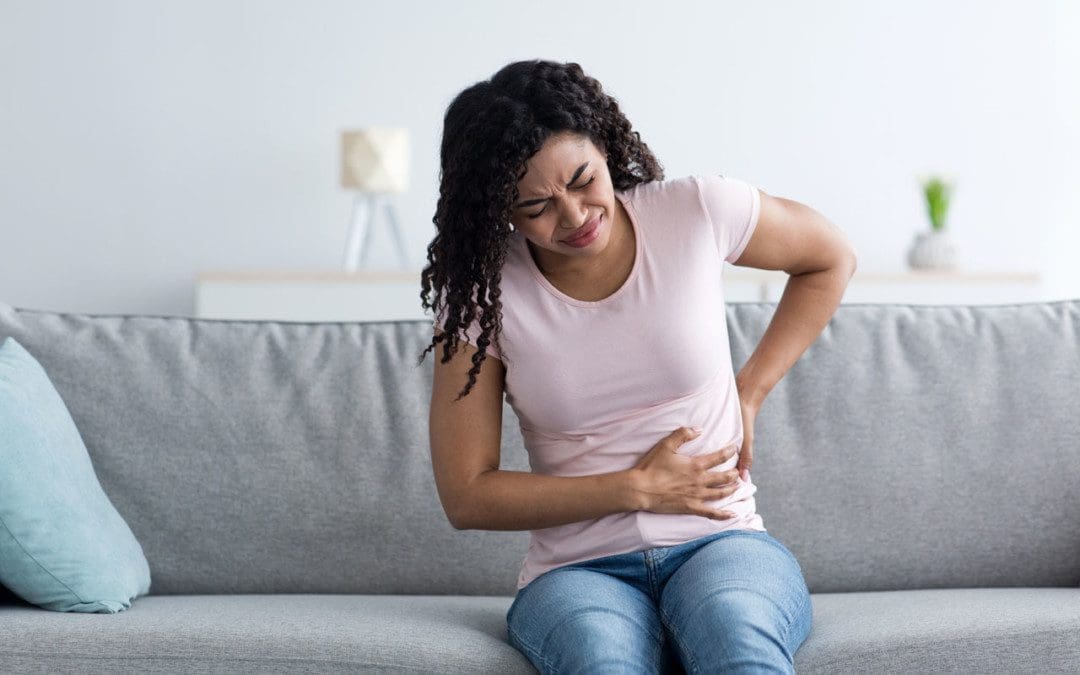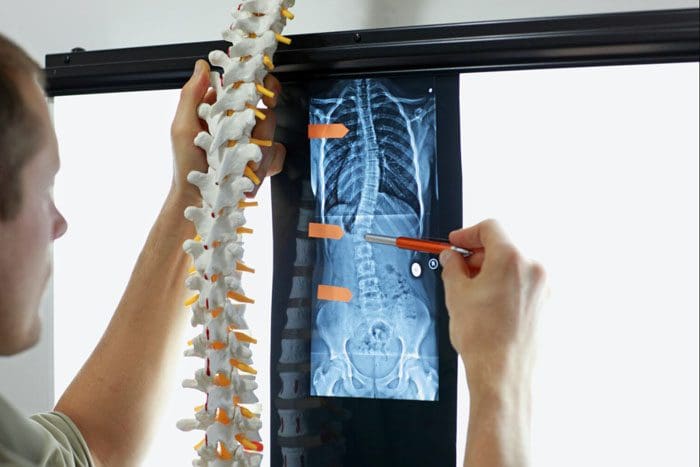
Scoliosis and Hip Pain
Scoliosis causes the spinal curvature to go sideways and can cause various symptoms. One of the most common symptoms is scoliosis hip pain. This happens because the spine’s curvature can pull the hips out of alignment, causing one side to be raised higher than the other. A result of this is one hip begins to take on more weight. This overloads the hip causing strain, soreness, aches, and pain, especially after standing or walking.

Scoliosis Hip Pain
Idiopathic scoliosis typically occurs in children, but often there are no pain symptoms. This type of scoliosis can go on unnoticed and undiagnosed for years even until adulthood. When the spine stops growing, even a small scoliosis curve can cause hip pain. The hip pain varies but generally presents with:
- Sharp pain.
- Throbbing pain.
- Pain that increases with activity like walking, running, standing for a long time.
- Stiffness with combined pain after sitting or lying down for a long time.
- Sciatica.
- Numbness.
- Tingling.
- Tight hip flexors.
The amount of pain depends on:
- The misalignment severity.
- The type of scoliosis – degenerative or idiopathic.
- Bodyweight. Individuals that are obese are more likely to have severe hip pain because of the added weight.
- Activity level. Physical activity can cause the pain to worsen.
- Lifestyle.
- It varies from person to person.
The Higher Hip
When scoliosis has progressed enough, the curvature and uneven hips are pretty apparent. However, only around 10% of scoliosis cases get this far. If the curvature is minimal, which is usually the case, trying to determine which hip is higher usually requires medical assistance.
- The hip that presents with pain is generally the one taking on more weight.
- This causes the muscles to fatigue faster and places added stress on that hip joint.
- A way to tell which hip is higher stand on bare feet in front of a mirror holding a piece of yarn, or string with both hands.
- Place the heel of each hand on the corresponding hip bone.
- The string will be tilted if the hips are uneven or will be straight if they are not.
Adult Scoliosis
Hip pain caused by scoliosis is most common in adults. However, it is not the only cause of hip pain. Unless diagnosed with scoliosis as a child, individuals may be suffering from de novo scoliosis or degenerative scoliosis.
De Novo/Degenerative Scoliosis
As the body ages, the spinal discs between the vertebrae begin to wear down. The worn-down discs can cause the spine to develop a sideways curve, that can pull the hips out of alignment. Studies are showing that this type of scoliosis is widespread. Loss of bone density can be a contributor to scoliosis in older adults. Bone density loss from menopause means women are more susceptible than men. Past the age of 70, both men and women lose on average, the same amount of bone density. There are effective integrative, natural treatment therapies that incorporate:
- Exercises
- Nutrition
- Posture correction
- Chiropractic
- Physical therapy
Scoliosis Hip Exercises
For uneven hips, there are exercises to help relieve pain and strengthen weak muscles.
Hip Stretch
- Lie on the back with both legs straight out.
- Lift the right leg
- Using the hands pull the knee toward you, keeping the foot pointed up.
- Pull the knee to your chest as far as you can without causing discomfort or pain.
- Hold for 5 to 8 seconds.
- Release.
- Switch to the other leg.
- Repeat 4 to 6 times on each leg.
Wide Leg Stretch
- Sit on the floor with the legs as wide as they can go.
- With the right hand, reach toward the left foot, touching if possible.
- Return to the original position.
- With the left hand, reach toward the right foot.
- Repeat 6 to 8 times.
Chiropractic
If misaligned and uneven hips are causing pain, chiropractic care for scoliosis is recommended. Spine and hip realignments help relieve pain, stretch the muscles, and corrects posture. One study showed that multi-approach chiropractic for adult scoliosis was found to be beneficial even two years after treatment was finished. Injury Medical Chiropractic and Functional Medicine Clinic can help with recommending nutrition and lifestyle tips. Instead of just treating symptoms, our team helps manage the cause.
Body Composition
Body Analysis for Disease Prevention
Early identification of disease is imperative for developing the proper treatment plan. Testing can help improve long-term health outcomes. Testing is made easy with the data being easily implemented into patient management software. A comprehensive printout is ready for engaging and educating patients in understanding health risk management and reduction. In 60 seconds, an InBody Test will generate easy-to-understand, accurate, and objective measurements to evaluate potential disease risk. Medical providers can use the InBody to:
- Monitor muscle, and visceral fat to provide an accurate measure of health risk.
- Monitor muscle distribution to determine specific health risks related to diseases.
- Identify fluid imbalances associated with certain diseases.
- Track changes for effective long-term risk identification and reduction.
References
www.aafp.org/afp/2001/0701/p111.html#afp20010701p111-b1
link.springer.com/content/pdf/10.1007/s00586-020-06453-0.pdf
www.healthline.com/health/uneven-hips
www.sciencedirect.com/science/article/abs/pii/S1556370711000915





